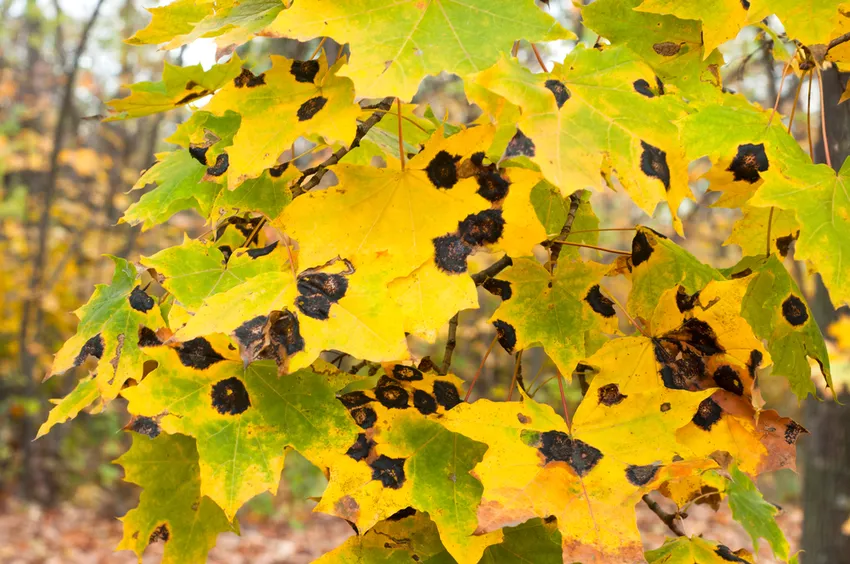- Maple wrinkle scab - recognize signs and treat
- Identifying and combating red pustule fungi - this is how it works
- Verticillium wilt - recognize symptoms and act correctly
A maple is not spared from tree diseases. Insidious pathogens target the beautiful leaves, the distinctive bark or the shoots. Affected gardeners are not powerless in the face of damage. This guide lists typical symptoms and natural control methods. This is how you take the fright out of frequent tree diseases on the maple.
 Wrinkle scab is one of the most common maple diseases
Wrinkle scab is one of the most common maple diseases
Maple wrinkle scab - recognize signs and treat
One of the most common tree diseases affecting maples is aptly named after the tree. The pathogens of maple wrinkle scab have specialized in the genus. Due to the unmistakable damage, the infection is also known as tar spot disease. How to diagnose and control fungal infestation:
- Shiny black, yellow-edged, slightly raised spots on living leaves
- Premature leaf fall in summer
- Control: collect all leaves in autumn, burn them or dispose of them in the household waste
By interrupting the development cycle of the fungal spores by carefully removing the leaves, your maple tree will be spared the disease the following year.
Identifying and combating red pustule fungi - this is how it works
The conspicuous fruit bodies only reveal one of the most common tree diseases in autumn and winter. Long before that, the pathogens of the red pustule disease nested in a maple tree that had been weakened by mistakes in care. How to track down the fungal spores:
- Withering leaves and drooping shoots in spring and summer
- Unusual bark discoloration followed by cancerous growths
- In the cold season, bursting out of pinhead-small, vermilion fruit bodies
The pathogens have so far proven to be resistant to known fungicides. In field tests, tree disease experts found out that cutting back into healthy wood deprives the fungal spores of their livelihood. The best time to do this is on a mild, dry day between early September and mid-October.
Verticillium wilt - recognize symptoms and act correctly
A maple is the most important host plant for the fungi of the Verticillium genus. Fatally, the pathogens penetrate the pathways via the soil, blocking the supply of water and nutrients, so that the affected maple tree is doomed to perish. Since the disease is massively contagious, we recommend immediate clearing and subsequent soil replacement. You can recognize Verticillium wilt by these symptoms:
- Branches sprout normally in spring and show wilted leaves out of the blue
- Previously firm, green leaves become pale green and limp
- Ring-shaped, brown discolorations can be seen in thicker branches that have been cut open
Typical of Verticillium wilt is the partial occurrence of the symptoms mentioned. While no signs can be seen in one region of the crown, other areas are gradually dying. Based on this local spread, the disease can be easily distinguished from frost damage, drought stress or waterlogging.
tips
If you are worried about brown leaves on the maple tree, it is usually not a disease. If the brown discoloration begins on the leaf edges, the tree or shrub is suffering from a location problem or care errors. A windy location triggers the damage just as often as substrate that is too wet or too dry.